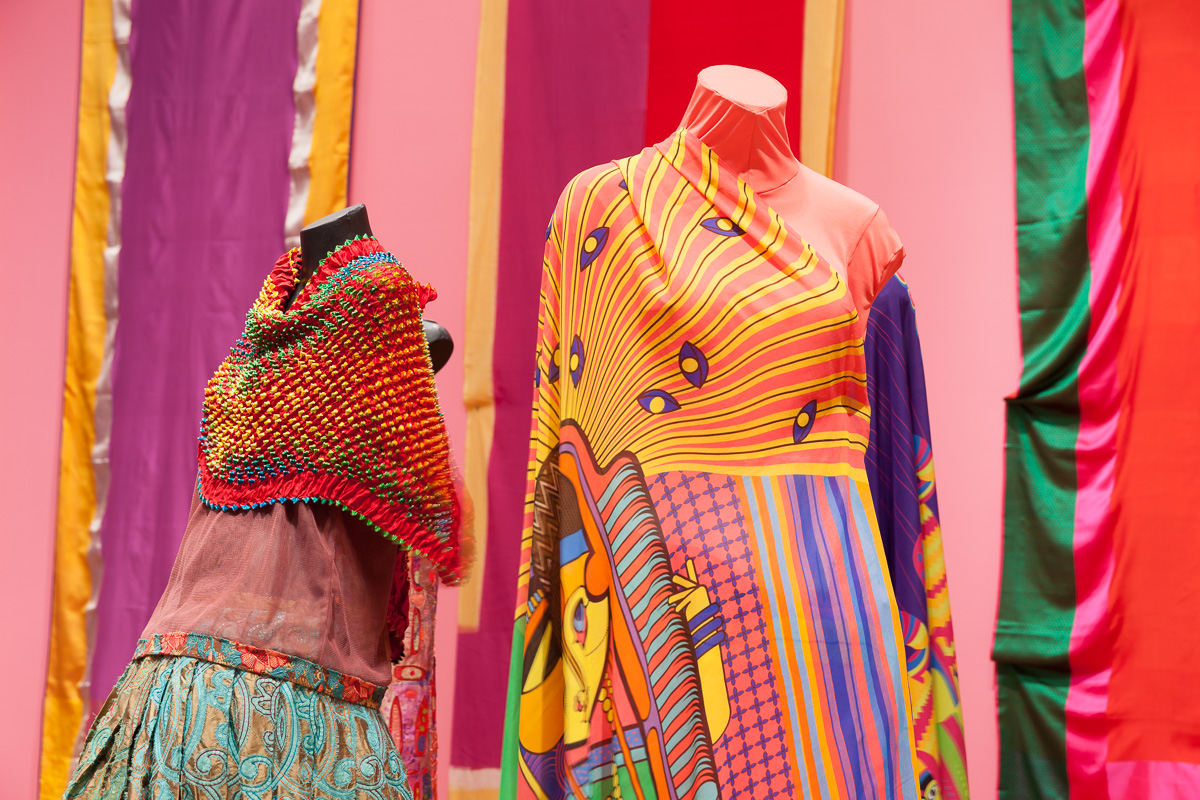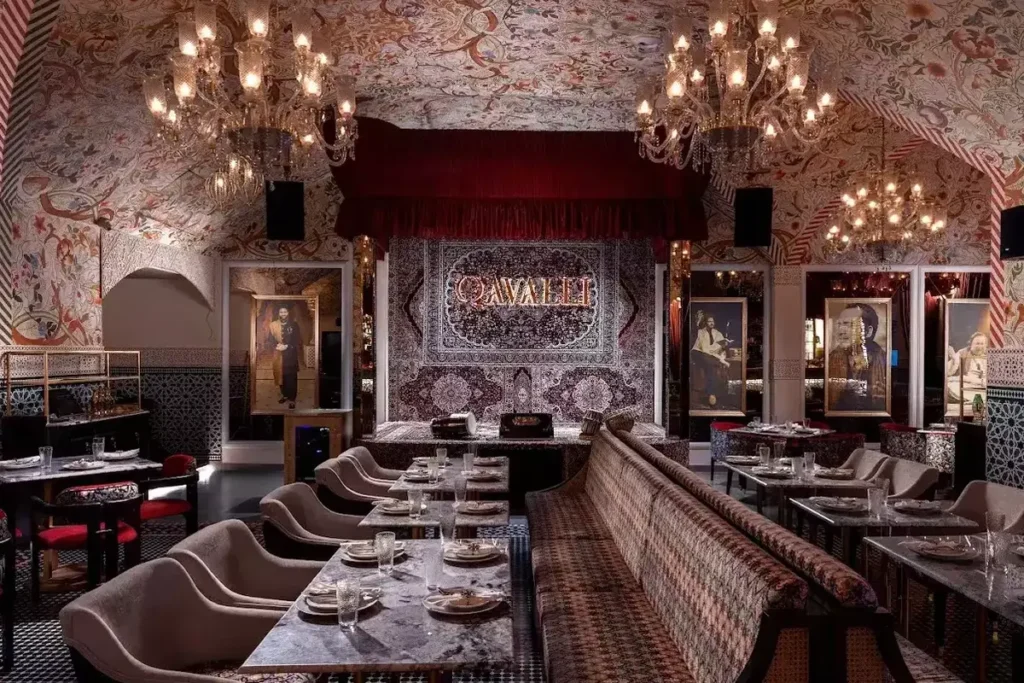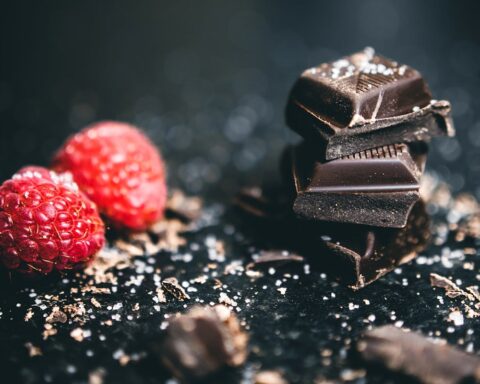The Indian textiles and Indian textile industry are famous not just in India but internationally as well. These textiles have some of the most unique features that are unheard of anywhere else, nationally or internationally. It is said that a pure silk saree is so delicate and unique that it can be folded and stored in just a small matchbox and then there is also Chikankari, such intricate work that it takes continuous efforts of multiple days to make one single piece of saree.
Let us look at some of the most famous and intricate Indian textiles, from Banarasi silk saree to the renowned Kalamkari art form.
Also read Most Expensive Diamonds: A Closer Look at 7 Most Valuable and Luxurious Diamonds
Here’s Top Ten Indian Textiles That Are Worth Hype
Khadi
Khadi is a kind of Indian textile that comes with a line of long and rich historical significance. Khadi is a natural fabric that is hand woven. Its popularity isn’t restricted to India, but it is rather famous in countries such as Pakistan and Bangladesh. It is uncommonly women with cotton, but one can also use materials such as silk and wool with it to make their customised and desired material.
The khadi is spun on a charkha, a round tool that spins the thread around it and helps in the formation of the cloth. The khadi is known for its versatile properties as it keeps you cool in summer and keeps you warm in winter; therefore, it is a well-known textile that has a history associated with Indian culture. It was first popularised during the Boycott movement in India and was introduced as a swap of foreign goods and clothes under the ‘Swadeshi movement’.
However, the khadi was launched commercially only in the year 1925 by the ‘All India Spinners Association’. Lastly, the properties of khadi also extend to its nature, being not just organic but also a sustainable fabric that is durable.
Kalamkari
Kalamari is a heavily beloved Indian textile that is filled with iconic elements that make it stand out. It is believed that it first started in the 17th century when it used to be drawn in the temples but later found its way to the canvas in Andhra Pradesh. This form of Indian textile is an integral part of Indian culture and tradition as it has the unique ability to narrate history to us in a creative way. Their designs are filled with iconography and mythologies.
Originating from the Indian states of Andhra Pradesh and Telangana, this textile portrays some of the most sacred texts of the Hindu culture, such as Ramayana, Mahabharata, and Bhagavatam. Furthermore, the name ‘kalamkari’ comes from the word ‘kalam’, which translates to pen and the term ‘kari’ refers to the intricate details. Thus, the intricate drawings drawn by hand with the help of a pointy pen give us beautiful kalamkari designs that are filled with stores that are waiting to be told to more people.
Paithani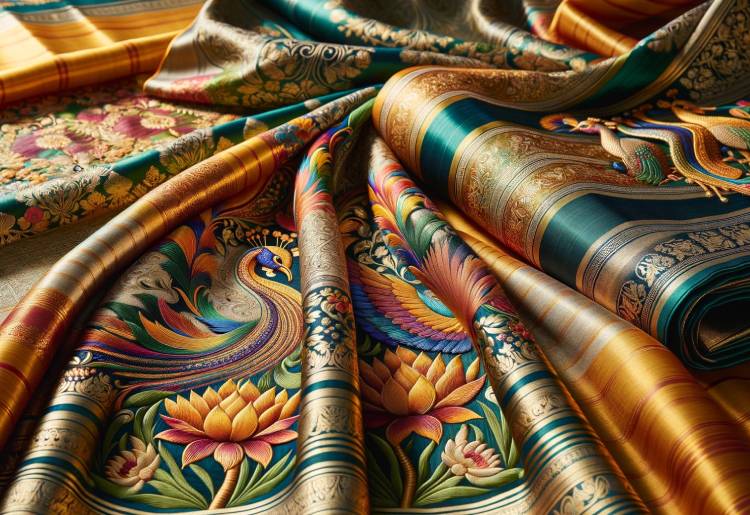
The weaving process of this art form in India takes years’ worth of patience and skills that are not easy to find. This one is also a kind that can only be done by handloom in India and is shared through generations. In this, you will be able to see a kaleidoscopic pattern that adds a vibrant colour palette to the sarees. Maharashtrian brides are often seen adorned in this beautiful Paithani Brocade saree.
The history of this saree is associated with the royal dynasties of the medieval period with the town of Poathan. The name of this textile is also derived from the name of the town itself. The work in this saree is done finely with the help of finest of the silk thread that is spun locally. Often, this silk thread is replaced with a gold one and adds more luxury to the sarees.
Multiple kinds of motifs are seen in Paithani sarees; some prominent motifs, such as a green parrot on the border and some designs in the pallus, are seen in most of them. At last, this saree carries the fineness of the handloom of India, an industry that needs no introduction of its royalty and luxury.
Banarasi Silk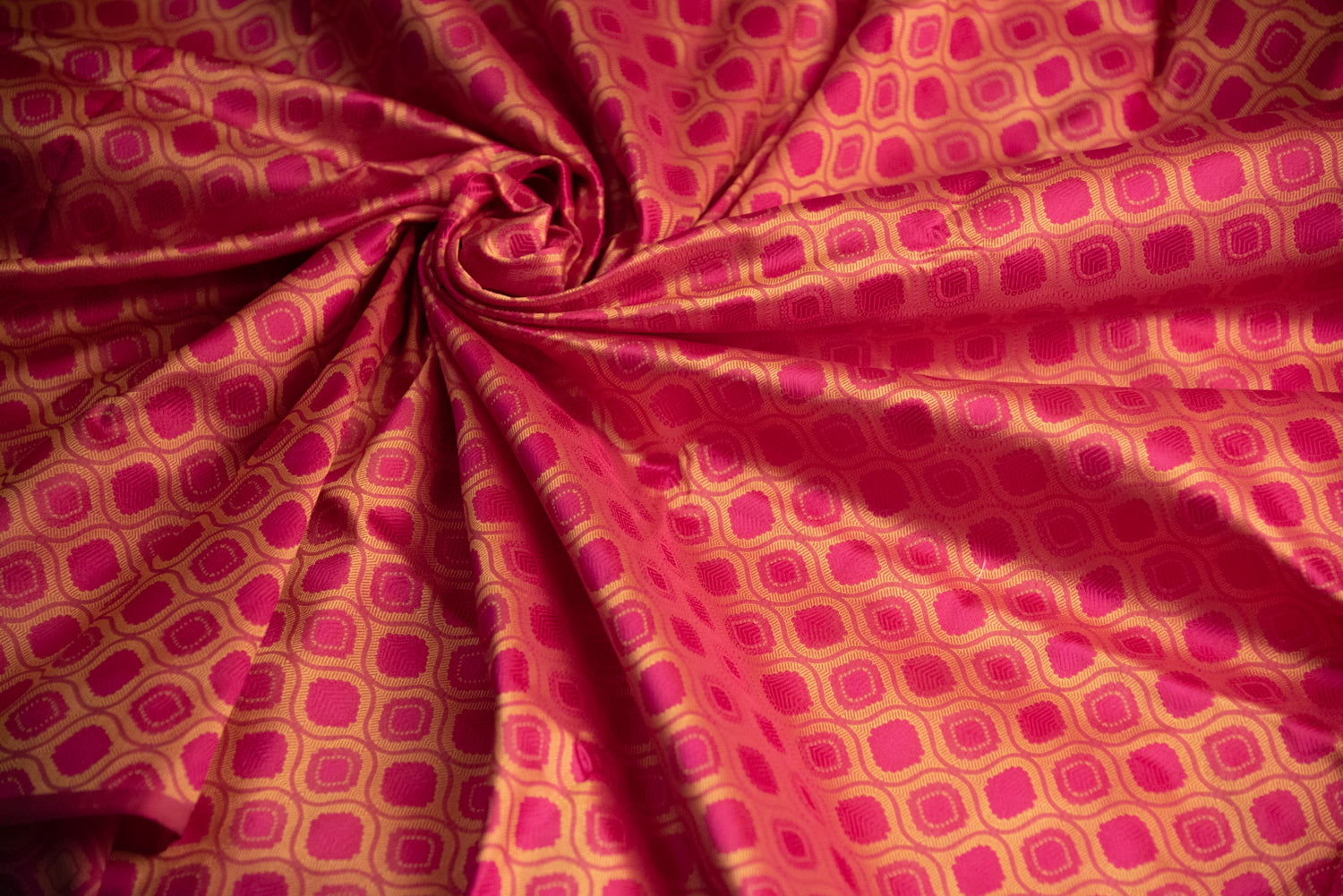
Originating from the Sacred City of Banaras, Kashi, this Indan textile has become an attraction for tourists across the globe. However, the start of this epic journey started centuries ago in Varanasi, Uttar Pradesh, precisely in the 14th century. The art of weaving silk was a new one back then and gained its popularity due to the rich and royal nature of the material.
Soon, Banaras became a prominent point for the production of silk and silk sarees, and these techniques were later passed down from generation to generation. The artisans traditionally weave the pure silk threads by their hands, and the sari is later adorned with metallic thread that is typically made out of silver or gold, known as Zari.
The zari work that adorns the beautiful Banarasi silk saree is filled with nature, Mughal art, flora, fauna and even geometric patterns. Finally, a Banarasi silk saree made from pure silk with the work of zari is considered a sign of royalty and luxury.
Also read Soulful Sufi Evenings: 7 Restaurants In Delhi That Host Captivating Sufi Nights
Chikankari Embroidery
Chikankari, this traditional embroidery art originates from Lucknow, Uttar Pradesh. This Indian textile is known for its precise, delicate and intricate white threadwork. This threadwork is adorned on the fine muslin fabric and, therefore, gives life to the beautiful patterns and designs. This art was believed to be introduced by the Mughals in India back in the 16th century.
It is said that it was introduced in India first by Nur Jehan, who was the wife of Jahangir, the Mughal Emperor. The details were usually inspired by the leaves, birds, and flowers, but over time, many new patterns and designs were introduced, such as Persian and Turkish designs. Moreover, this Indian textile gained significant importance during the rule of Nawabs of Awadh in the 18th and 19th centuries and was promoted as a way of preserving the art form.
Contemporarily, the Chikankari kurta is a trend and has been in high demand, but the nature of true Chikankari is only one of a kind and can be identified even by the mere touch of hands.
Sambalpuri Textile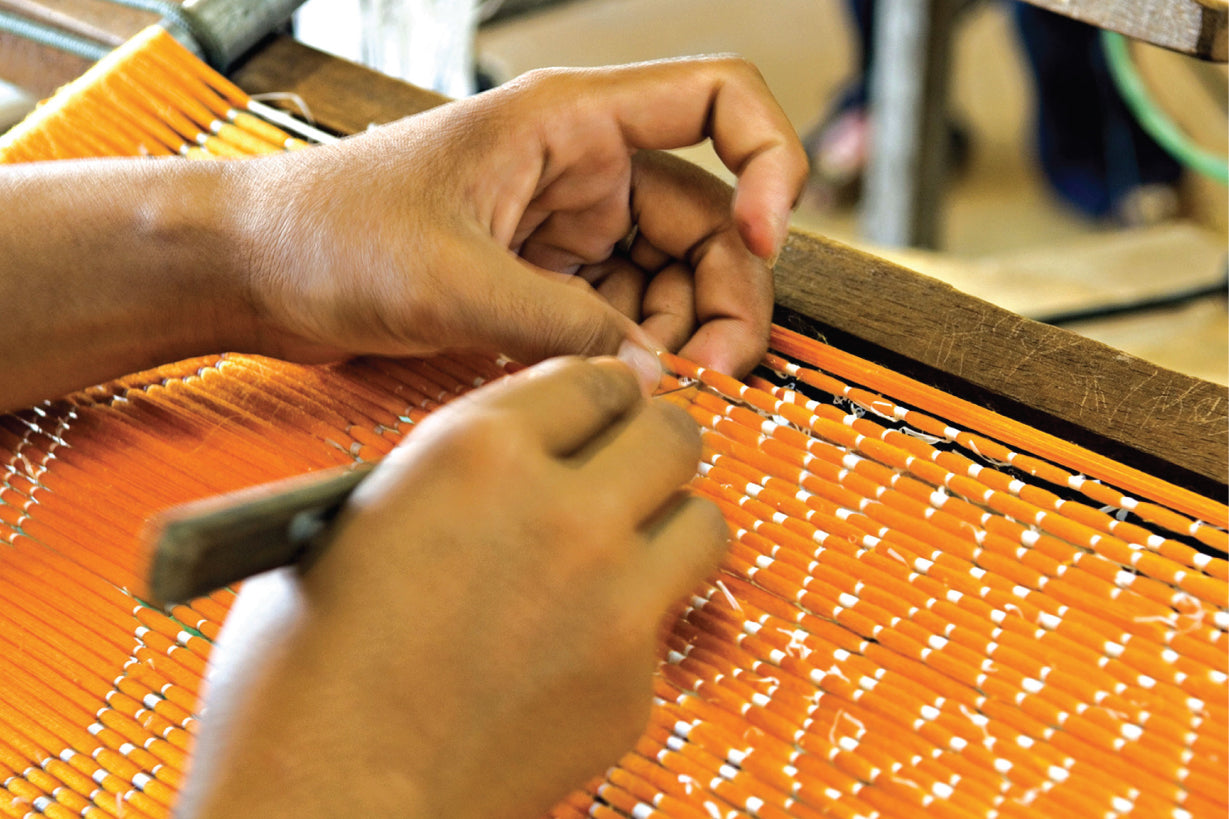
The Sambalpuri art form uses the double ikat weaving. Ikat weaving is one of the most popular handlooms in the world of weaving and Indian textiles. It is believed that this art form was first started by the Bhulia community and later became popular throughout nature through Mrs Indira Gandhi, who used to wear the Sambalpuri saree. This Indian textile originates from Sambalpur, Odisha and is a precious possession among the Odisha Handlooms.
These sarees are known for the beautiful woven pallus and borders that are purely hand-woven. These sarees were first popularised as ‘Bhulia Kapta’ because of the community that introduced it. However, these sarees are often known as ‘Pata’ because some of them got a Geographical indication tag in the year 2010.
Pashmina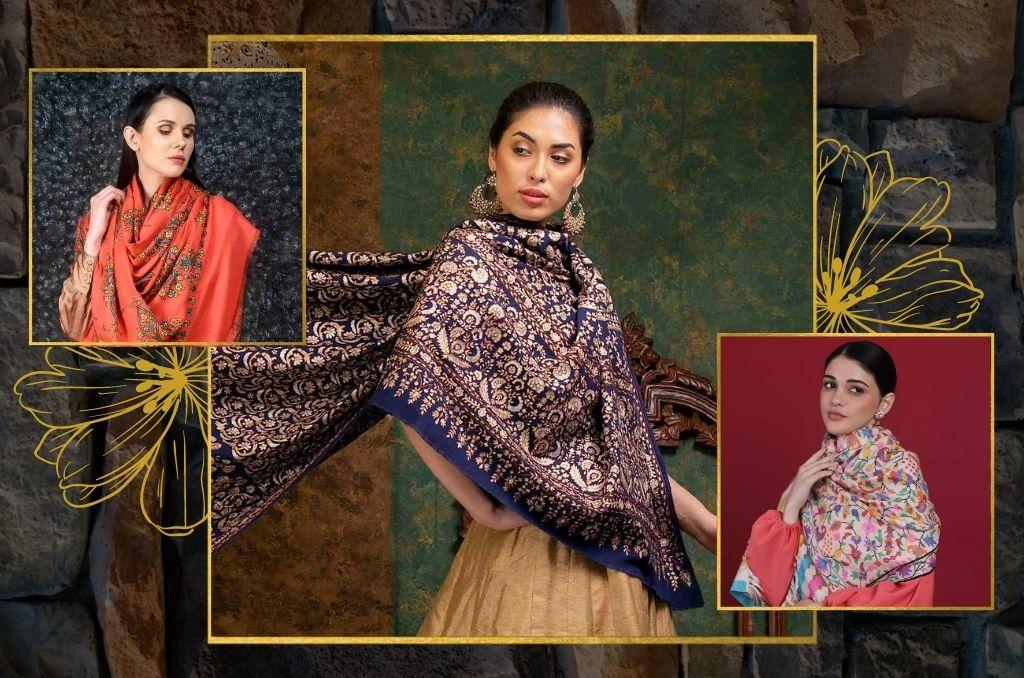
If fineness and luxury had a name, it would be Pashmina. It is is considered the epitome of creativity and craft. The fleece used for this is that of Chanthangi Goat, which Is also known as Pashm. As this is an exotic goat and is only found in certain regions of Ladakh, Jammu, and Kashmir, Pashmina remains extremely rare and reflects luxury.
People from all over the world admire Pashmina as a true testament to luxury, which is presented in its softest form. The shawls of Pashmina are the most popular material that can be seen among locals as well as visitors. The Pashmina shawls also carry certain motifs that are a rather recent addition. These motifs consist of Buti, Buta and Khat-rast.
Also read Sudha Reddy’s Stunning Met Gala Look: Flaunting 200-Carat Diamond Heirloom
Ikat Fabric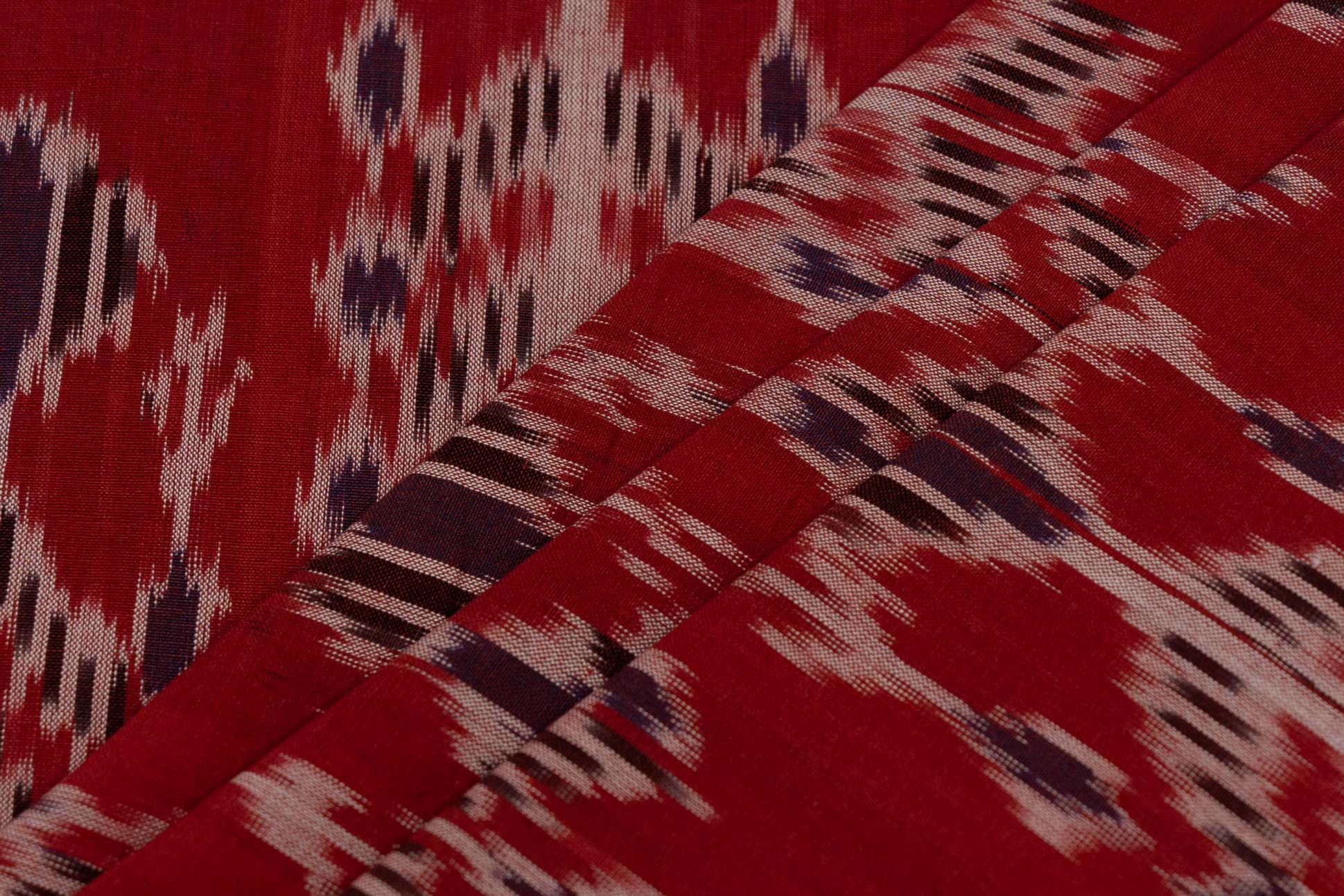
Ikat textile is an important part of India’s culture and the art of saree making. It is believed to have originated from Pochampalli, Hyderabad. However, contemporarily, it is found in many regions with deep and varied traditions, each of them having its own kind of Ikat art. Ranging from regions of Odisha, Gujarat and Telangana, this art form tells old stories in a creative way.
It is believed that the form of Ikat started in Indonesia, and India developed its own unique ways of weaving it. This blend of culture and skill is still popular around the world today. Even though Ikat is widespread, its main element remains the same. The patterns in Ikat can be broadly divided into three types: abstract, environmental, and geometric. Each type is inspired by the place, people, and nature around them. Geometric patterns include stripes, checks, chevrons, and diamonds.
Abstract patterns have blurry waves and lines in different colours. Environmental patterns are inspired by plants, animals, and daily life. Furthermore, some of the unique styles and speciality in Ikat form can be seen in Patola Ikat, which is found in Gujrat; Smbhalpuri Ikat, which is found in Odisha; and Pochampally Ikat, which is found in Telangana.
Phulkari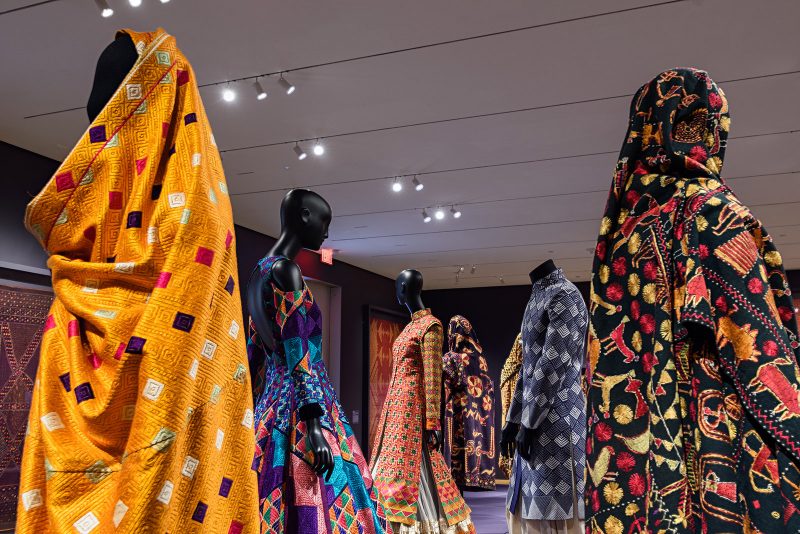
Phulkari is a traditional embroidery passed down through generations and has come to become one of the most popular textiles in India. It was only after the 19th century that it came to be commercially popularised. It is believed that this art form was historically practised by women in the Punjab region in India and Pakistan. Phulkari is known for its clean patterns of geometric and natural motifs. The name ‘Phulkari’ means “flower work” in Punjabi.
The most important part of this art form is embroidery, which was done carefully by the skilful women of the region. Over the span of a few years, phulkari garments were closely tied to significant life events, especially marriage. Phulkari shawls are often given to brides by their maternal relatives. Moreover, Phulkari is also mentioned in the Sikh holy book Guru Granth Sahib and the Punjabi epic Heer Ranjha.
Phulkari embroidery uses bright-coloured silk thread that comes historically from Kashmir and Bengal. It is usually done on coarse handwoven cloth called khaddar, typically dyed red with traditionally plant-based dyes. But today, Phulkari includes not just flowers but also animals and geometric forms. Floral motifs feature marigolds, jasmines, lotuses, and Tree of Life designs.
There are various types of Phulkari, some of which include sainchi, tilak, thermal, shisha, til Patra, and suber phulkari. Today, phulkari is mainly produced in Gurdaspur and Patiala and is used in various garments like dupattas, kurtas, blouses, and saris.
Jamdani, West Bengal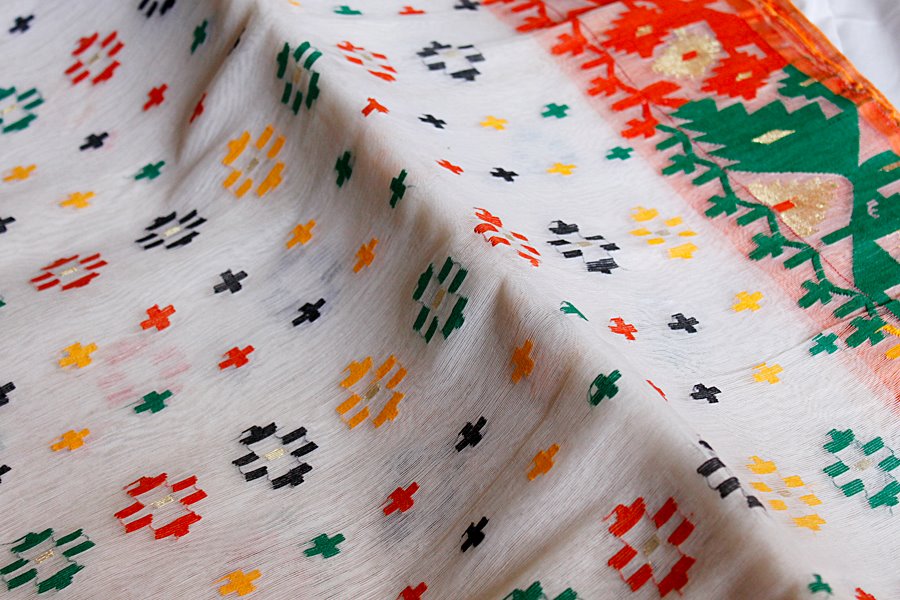
Let’s understand the significance of this art by stating that the Jamdani art form was declared a UNESCO Intangible Cultural Heritage of Humanity in 2013. Let us now understand the origin of it as this art form carries a rich historical importance. It was around the 12th century when the motifs met colour and led to the formation of this motif-rich art form.
Later, it is believed that it was under Akbar’s region that this art form became popularised, and this most unique and intricate form of the flowered muslin came to be known as Jamdani. This art form is associated with the current state of West Bengal, also known as Kolkata the then. The Jamdani fabric is woven with the help of dense threads and fine threads wrapped together to form its Zari.
Final Thoughts
Conclusively, we have come to know about not just the name of Indian textiles but their origin as well as their speciality. Each and every one of them originates from a different state of India and carries a story on its own that is waiting to be told to the newer audience that needs to discover these Indian textiles and fall in love with them. So, the next time you are looking to buy a saree, do look forward to these beautiful sarees that are beautifully adorned and hand-crafted.

